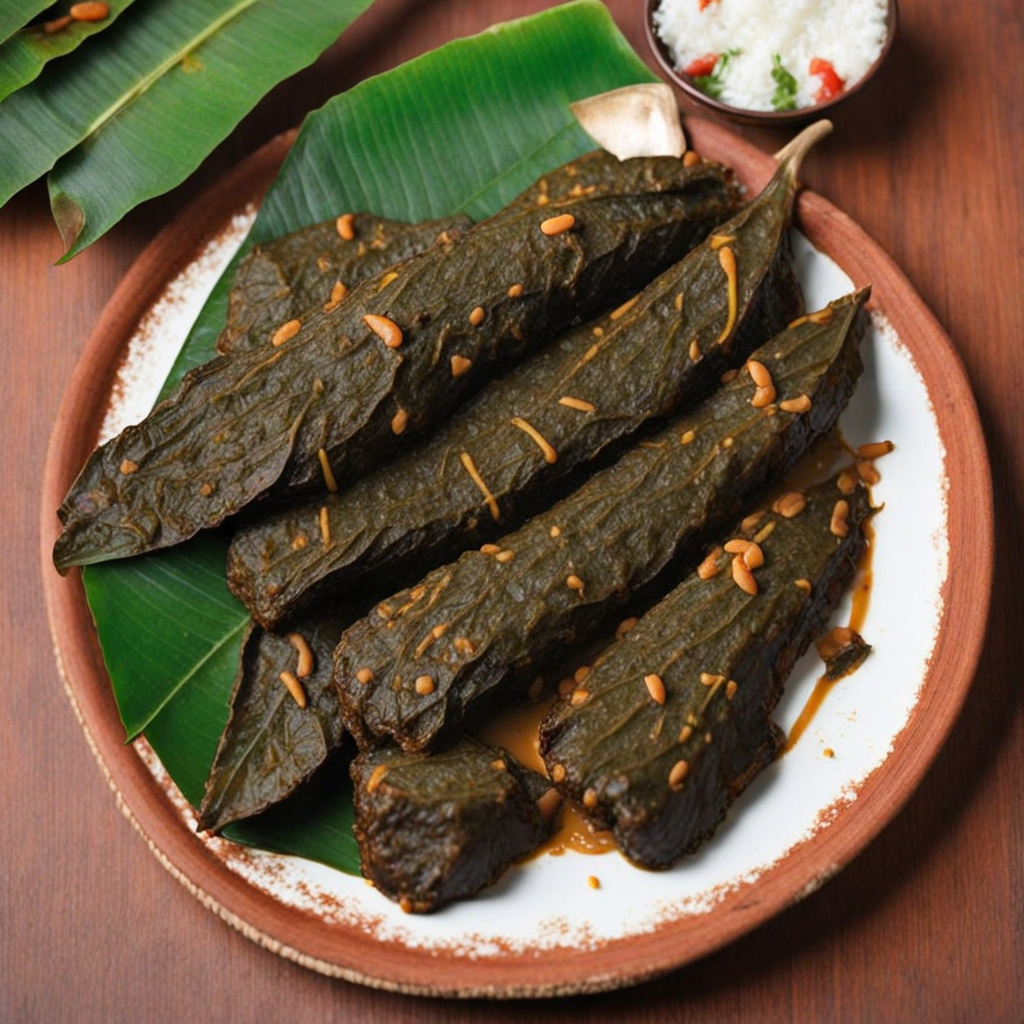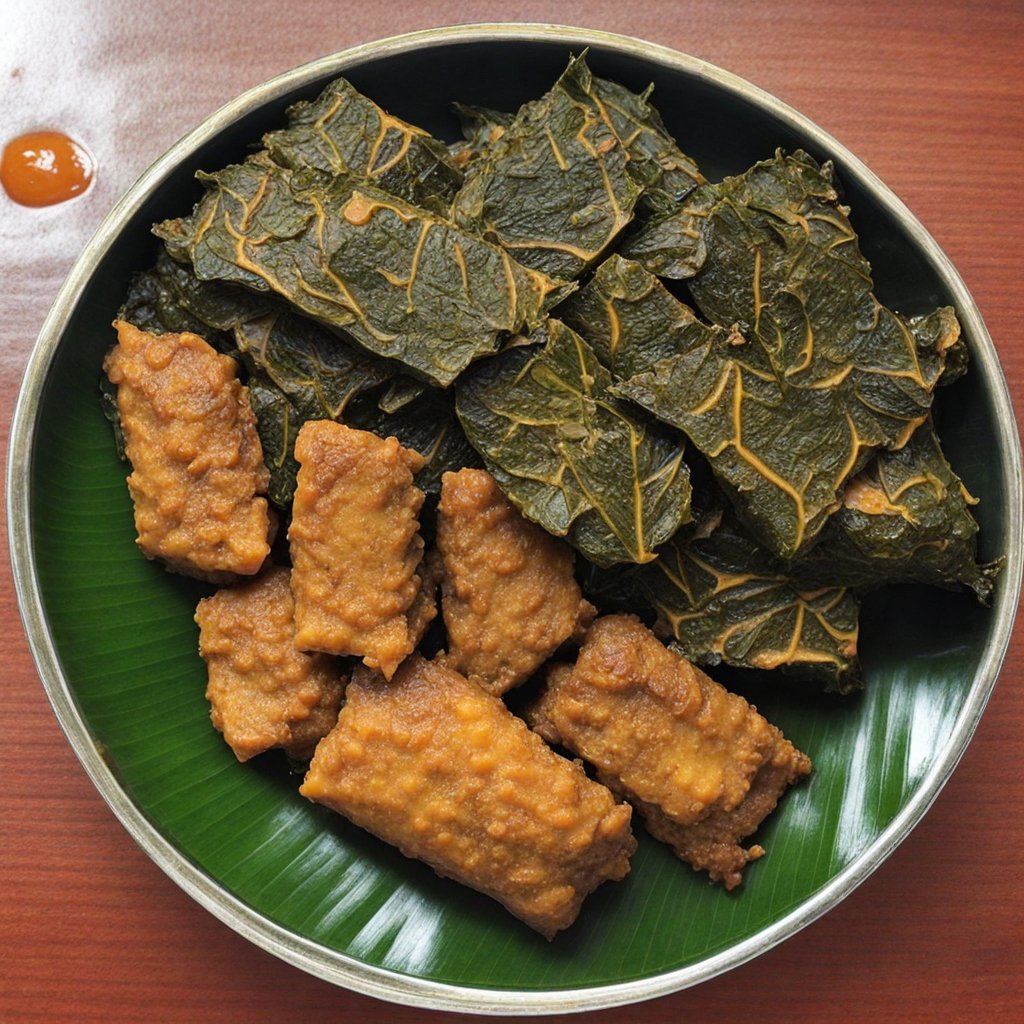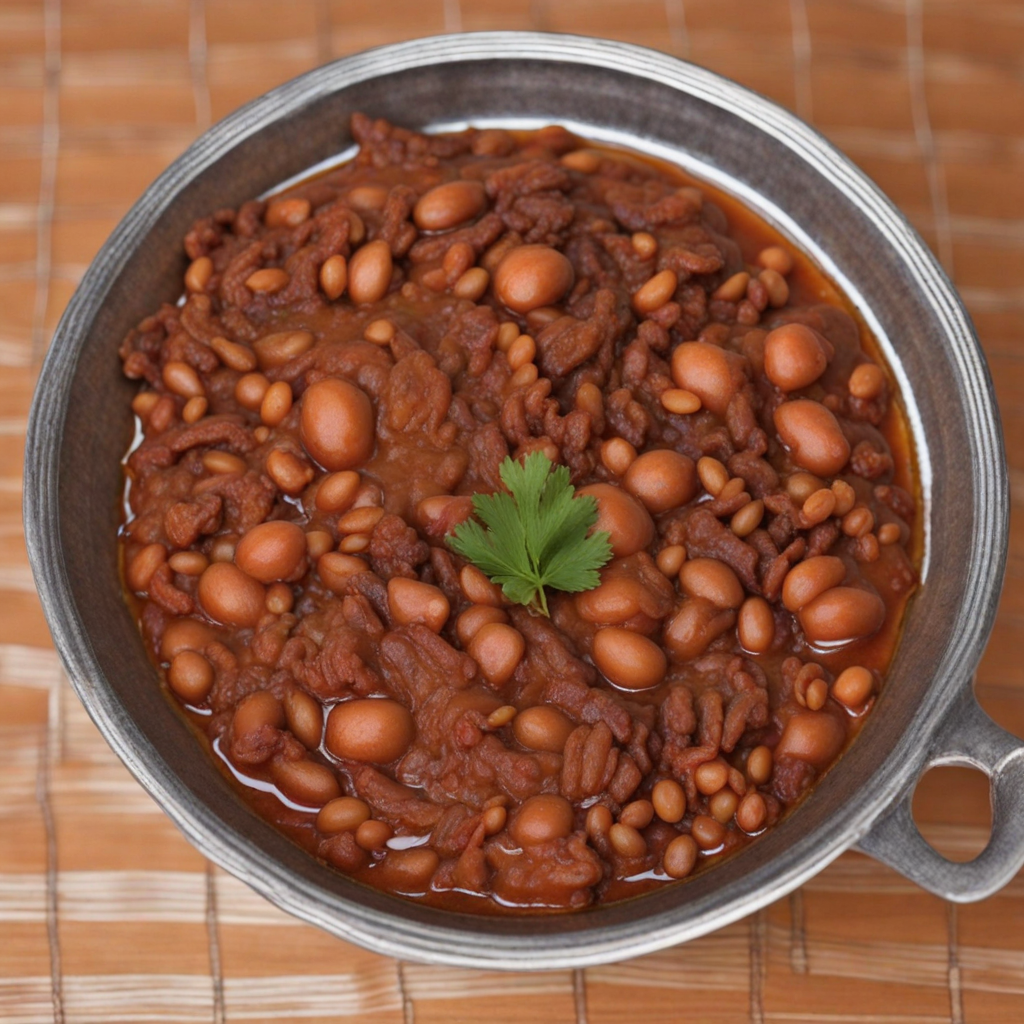Saka Saka
Saka Saka, a traditional dish from the Democratic Republic of the Congo, captivates the palate with its unique blend of flavors and textures. At its core, Saka Saka is made from cassava leaves, which are finely chopped and cooked until tender. This leafy green base is enriched with a variety of spices and ingredients, often including ground peanuts or palm oil, which adds a rich, nutty flavor to the dish. The preparation process involves slow cooking, allowing the flavors to meld beautifully and resulting in a dish that is both comforting and hearty. The dish is typically served as a side or a main course, often accompanied by staples such as rice, fufu, or plantains. Its earthy, slightly bitter taste from the cassava leaves is balanced by the creaminess of the peanuts and the richness of the palm oil, creating a harmonious blend that is both satisfying and nourishing. The texture is a delightful combination of silky greens and the crunch of ground nuts, making each bite a delightful experience. Beyond its delicious taste, Saka Saka also carries cultural significance, often enjoyed during family gatherings and communal meals. It embodies the essence of Congolese cuisine, reflecting the use of local ingredients and traditional cooking methods. For those looking to explore new culinary horizons, Saka Saka offers a taste of the Congo that is both exotic and familiar, inviting food lovers to discover the rich heritage and flavors of this vibrant region.
How It Became This Dish
The History of Saka Saka: A Culinary Treasure of the Congo Origin and Ingredients Saka Saka, also known as "Poulet Saka Saka," is a beloved dish originating from the Democratic Republic of the Congo (DRC) and is made primarily from cassava leaves. The dish is deeply rooted in Congolese culture and culinary practices, reflecting the agricultural traditions of the region. Cassava, a staple crop in many parts of Africa, was introduced to the continent from South America in the 16th century. As it adapted to the African environment, it became a critical source of nutrition, especially in areas where other crops struggled to flourish. The name "Saka Saka" derives from the Lingala word for cassava leaves, "saka." In its preparation, the leaves are typically pounded or chopped finely and cooked with a variety of ingredients, including palm oil, groundnut paste (peanut butter), and often a mix of meats or fish. The dish is enriched with spices and sometimes flavored with onions, tomatoes, and hot peppers, creating a rich, hearty meal that is both nourishing and satisfying. Cultural Significance Saka Saka is not merely a dish; it embodies the spirit of Congolese identity and heritage. It is often served during communal gatherings, festive occasions, and family celebrations, symbolizing unity and shared culture. In many communities, food is a crucial aspect of social life, and Saka Saka plays a central role in these interactions. The act of cooking and sharing this dish fosters connections among family members and friends, preserving traditions and passing down culinary knowledge from generation to generation. The dish also reflects the agricultural practices of the Congolese people. The cultivation of cassava is often a communal activity, requiring cooperation and shared labor. As such, Saka Saka represents the collective effort of the community, highlighting the importance of collaboration in sustaining not only their diet but also their social fabric. Development Over Time Historically, the preparation of Saka Saka has evolved alongside the socio-economic changes in the DRC. Traditionally, the dish was prepared using simple methods, relying on locally sourced ingredients. The cassava leaves were harvested from family farms, and the accompanying proteins were often sourced from local markets or hunted in the surrounding forests. The use of palm oil and groundnut paste further illustrates the reliance on indigenous resources, which were readily available and integral to the region’s cuisine. As the DRC underwent various political and economic transformations throughout the 20th century, the culinary landscape also began to change. The influence of colonialism brought about new ingredients and cooking techniques, which gradually made their way into traditional Congolese kitchens. Although Saka Saka remained a staple, it began to incorporate a wider variety of flavors and ingredients, adapting to the changing tastes of the population. In recent decades, globalization and urbanization have further influenced the preparation and consumption of Saka Saka. With the rise of urban centers, traditional dishes have found their way into restaurants and street food stalls, catering to a broader audience. This exposure has led to a fusion of flavors, with chefs experimenting with new ingredients and presentation styles, while still paying homage to the traditional roots of the dish. Despite these changes, the essence of Saka Saka remains intact. It continues to be a symbol of resilience and cultural pride for the Congolese people. In a world that is increasingly homogenized by globalization, Saka Saka stands as a testament to the importance of preserving culinary heritage. Modern-Day Saka Saka Today, Saka Saka is celebrated not only within the DRC but also among the Congolese diaspora around the world. It has become a hallmark of Congolese cuisine, featured at cultural festivals and gatherings that seek to promote and celebrate Congolese identity. In cities with significant Congolese populations, restaurants specializing in traditional dishes like Saka Saka have emerged, offering a taste of home to those living far from their homeland. The dish is also gaining popularity beyond Congolese communities, as food enthusiasts and chefs worldwide seek to explore diverse cuisines. The unique flavor profile of Saka Saka, with its combination of earthy cassava leaves and rich, nutty sauces, is increasingly appreciated by those looking for authentic African dishes. This growing interest has led to a resurgence in traditional cooking practices, as more people are eager to learn about and recreate this culinary gem. Conclusion The journey of Saka Saka from a traditional dish rooted in the agricultural practices of the Congo to a celebrated culinary icon reflects the resilience and adaptability of Congolese culture. It is a dish that tells a story of community, identity, and the importance of food in social cohesion. As it continues to evolve and find its place in the global culinary landscape, Saka Saka remains a symbol of pride for the Congolese people, a dish that honors their heritage while inviting others to share in its rich flavors and cultural significance. Through the lens of Saka Saka, we can appreciate not only the complexity of Congolese cuisine but also the narratives of the people who cultivate, prepare, and share this beloved dish. As we celebrate Saka Saka, we recognize it as a vital part of the cultural tapestry of the Democratic Republic of the Congo, ensuring that its legacy endures for future generations.
You may like
Discover local flavors from Congo







